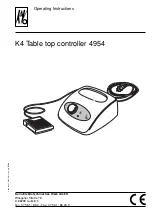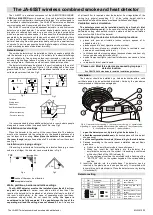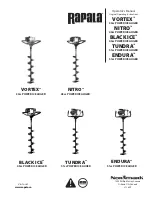
Section 4: Operating Procedures
1/13/21
22
•
Never fully extend or retract hydraulic cylinder(s) without
first checking to make sure the implement does not make
contact with tractor tires. Extending implement into the
tractor tires can result in loss of control and damage to the
•
Make sure hydraulic hoses are properly routed without
twists to prevent becoming stretched, pinched, or kinked. A
damaged hydraulic hose can burst and leak hydraulic fluid.
•
Avoid catching hydraulic hoses on brush, posts, tree limbs,
and other protrusions that could damage and/or break them.
•
Always dress to stay warm in cold weather. Never allow
body or extremities to become too cold. Use a cab to provide
protection against the cold. Go inside a heated area to
warm-up when getting too cold.
•
Be careful when working areas where obstructions can be
hidden. Always mark potential hazards with a visible flag.
Travel slowly through high risk areas and be prepared to
stop immediately should implement make contact with a
•
Never operate hydraulic cylinder(s) with blade in the
ground or under load. Improper use can result in loss of
control and damage the Rear Blade. Always lift blade up
before operating hydraulic cylinder(s).
•
When using the park stand, make sure it is fully down with
wire retaining pin fully inserted and wire retainer over end
of pin. If not, the implement could fall.
•
Never work near utilities such as gas lines, electrical lines,
or other hazards that can cause serious injury or death from
electrocution, explosion, or fire.
•
Never make contact with underground utilities such as
electrical power lines, gas lines, phone lines, etc. They can
cause serious injury or death from electrocution, explosion,
or fire. Always call 811 (USA) before digging so that they
can mark the location of underground services in the area.
For contact information, see Dig Safe in the “Important
Safety Information” starting on page 1.
Inspection After Hook-Up
Make the following inspections after attaching the 3-Way
Rear Blade to the tractor:
1. Inspect tractor safety equipment to make sure it is in
good working condition.
2. Carefully raise and lower the implement to ensure
that the drawbar, tires, and other equipment on the
tractor do not contact the frame and moldboard.
3. Carefully pivot blade fully clockwise and offset blade
to align end of moldboard with tractor tire. Raise and
lower implement to ensure tractor tire and tractor do
not contact end of blade.
4. Carefully pivot blade fully counterclockwise and
offset blade to align end of moldboard with tractor
tire. Raise and lower implement to ensure tractor tire
and tractor do not contact end of blade.
5. Inspect hydraulic hoses for wear, damage, and
hydraulic leaks. See
“Avoid High Pressure Fluids
Hazard”
on page 3
.
Replace damaged and worn
hoses with genuine Land Pride parts.
Transport With Rear Blade
DANGER
!
To avoid serious injury or death:
Always keep a safe distance from obstructions. The implement
can extend beyond tractor tires and makes a wide swinging
pattern when turning. Never hit solid objects with implement
as this can damage property and cause tractor to pivot
violently resulting in loss of control.
WARNING
!
To avoid serious injury or death:
•
When traveling on public roadways, travel in such a way
that faster moving vehicles may pass safely. Use accessory
lights, clean reflectors, and a slow moving vehicle sign that
is visible from the back to warn operators in other vehicles
of your presence. Always comply with all federal, state, and
•
Make sure implement does not block tractor’s Slow Moving
Vehicle (SMV) sign when transporting on a public road. If
operators in vehicles approaching from the back cannot
easily see the sign, then install one on the implement that is
visible to warn of your presence.
•
Transport with implement centered behind the tractor. An
implement offset to one side can extend beyond the tractor
tire which creates a a higher risk of hitting traffic and other
1. Do not operate a tractor that has weak or broken
brakes or worn tires.
2. When traveling on roadways:
•
Transport with blade centered behind the tractor to
minimize blade overhang.
•
Transport with blade facing forward so that the red
decals face back and amber decal face front.
•
Transport in such a way that faster moving
vehicles may pass you safely.
•
Slow down if traveling on a wet slick road.
3. Shift to a lower gear when traveling over rough or hilly
terrain and when going downhill.
4. Leave enough clearance on both sides of the Rear
Blade when traveling straight and making turns to
keep blade from contacting obstacles such as
buildings, trees, or fences.













































